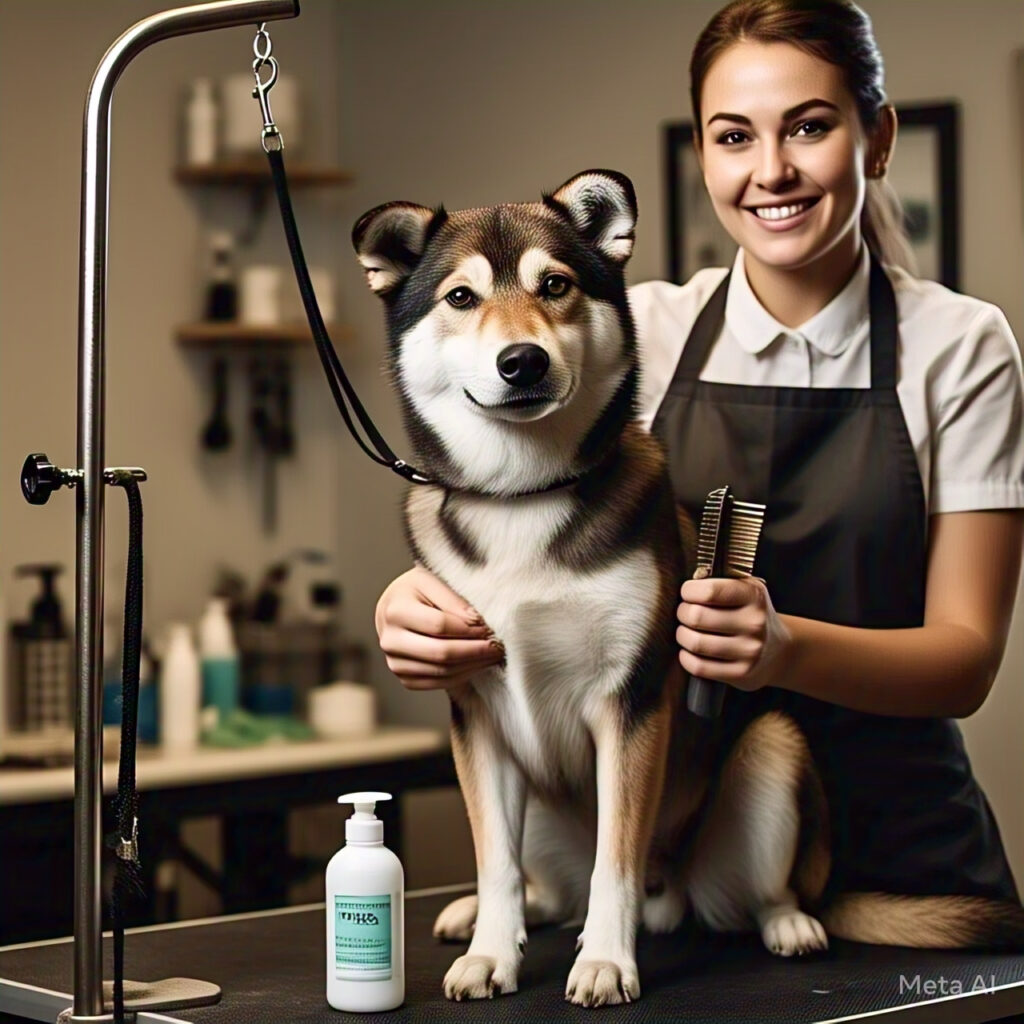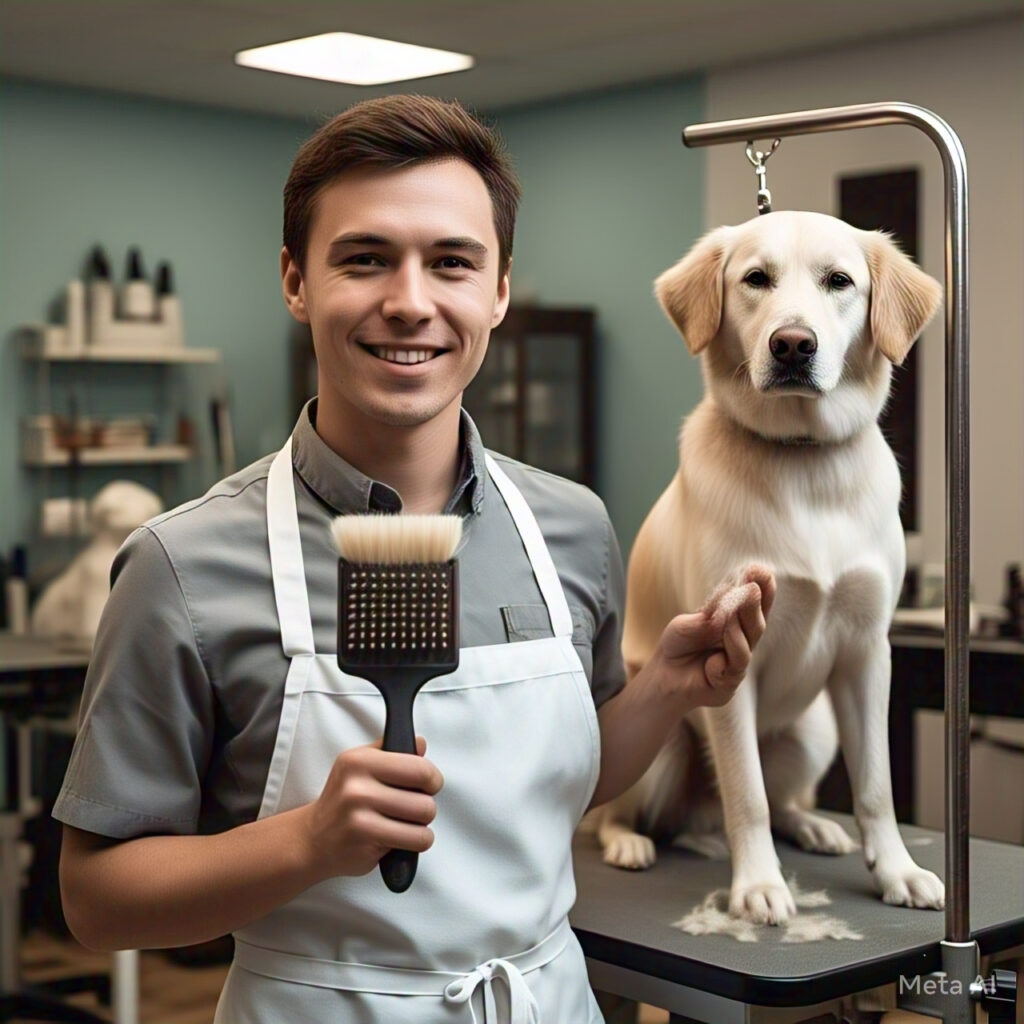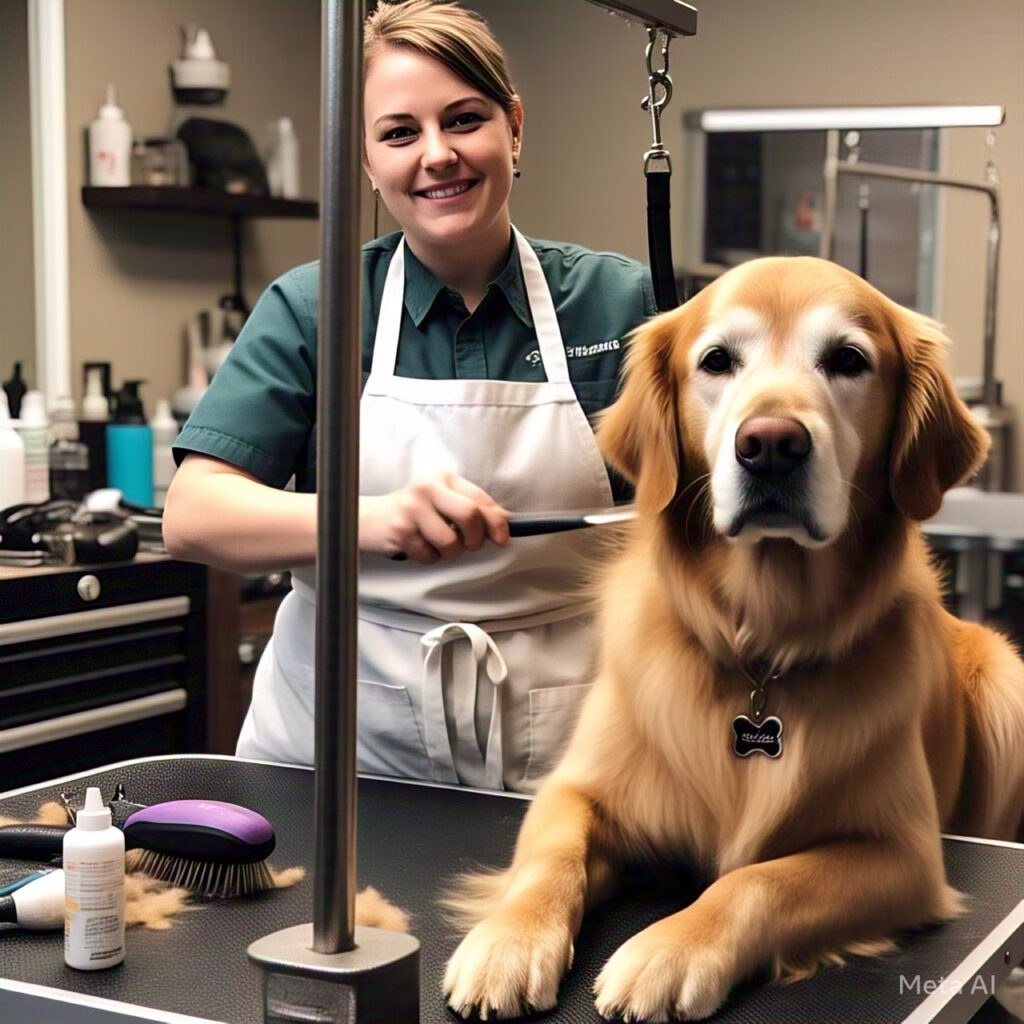
Is your dog’s fur dull? Is shedding out of control? Maybe their skin is itchy? You’re not alone! Many dog owners face these issues. Grooming isn’t just about looks. It keeps your dog healthy and happy. Regular brushing, good baths, a healthy diet, and care helps. These simple things can make a big difference!
The Foundation: Regular Brushing

Brushing is super important for your dog. It’s the first step to a great coat and healthy skin. It does way more than just make them look nice. Regular brushing removes loose fur. It stops mats from forming. Plus, it spreads healthy oils around. That keeps their skin from getting dry.
Selecting the Right Brush for Your Dog’s Coat Type
Different dogs need different brushes. A slicker brush works wonders for long-haired breeds. Think Collies or Shepherds. Bristle brushes are great for short, smooth coats. Dachshunds and Pugs benefit from them. Undercoat rakes are for dogs with thick undercoats, like Huskies. Not sure about your dog’s coat type? Watch how their fur grows and feels. Is it long and flowing? Short and sleek? Dense and fluffy? Ask your vet, if you still aren’t sure. They can also help you pick the best brush!
Brushing Techniques for Maximum Benefit
Brush your dog often! Aim for a few times a week. Daily brushing can help. Especially for dogs that shed a lot. Brush in the direction the fur grows. Use gentle pressure. You don’t want to hurt their skin. Brushing gets rid of dead fur. This stops mats and tangles. It also stimulates oil glands. That makes the coat shiny and healthy. Imagine brushing a Golden Retriever. You’re not just removing fur. You’re also making their coat gleam!
Bathing Basics: Cleansing Without Compromising

Bathing is important. You don’t want to do it too often. Too many baths can dry out their skin. Using the right shampoo is key. Proper techniques will keep your dog clean and healthy.
Choosing the Right Dog Shampoo
Pick a shampoo made for dogs. Human shampoo isn’t the best choice. It can irritate their skin. Look for gentle shampoos. Hypoallergenic ones are great for sensitive skin. Oatmeal shampoos can soothe itchy skin. Avoid shampoos with sulfates and parabens. Read the label closely! Harmful ingredients can cause problems. Instead, search for products with natural ingredients. Look for aloe vera, vitamin E, or chamomile. These can help soothe and nourish your dog’s skin.
Step-by-Step Bathing Guide
First, get everything ready. Have your shampoo, towels, and brush on hand. Wet your dog with warm water. Not too hot, not too cold! Start with their neck and work your way down. Lather the shampoo gently. Avoid their eyes and ears. Rinse well, making sure no shampoo is left. Use a towel to dry them off. If they tolerate it, use a low-heat dryer. Some dogs hate baths. Make it a positive experience. Use treats and praise. Be patient and gentle. Over time, they might even start to enjoy it!
Nutrition’s Role in Coat Health

What your dog eats affects their coat. Good food leads to a shiny coat. Poor nutrition shows in their fur. Nutrients are essential for healthy skin.
Essential Nutrients for a Healthy Coat
Omega-3 and omega-6 fatty acids are super important. These fats keep skin moisturized. They also reduce inflammation. Vitamins and minerals play a big part. Vitamin E is great for skin health. Zinc helps with coat growth. Look for food with fish oil. Flaxseed is another good choice. These have lots of omega-3s. Sweet potatoes are a great source of vitamins. Blueberries are full of antioxidants.
Understanding Dog Food Labels and Ingredients

Reading dog food labels can be confusing. It is important to know what to look for. Real meat should be at the top of the list. Avoid foods with lots of fillers. Corn, wheat, and soy aren’t the best. These can cause allergies. Talk to your vet about your dog’s diet. A nutritionist can help too. They can suggest the best food for your dog’s needs. A healthy diet will show in their coat!
Preventative Care: Identifying and Addressing Skin Issues
Spotting skin problems early is vital. Regular checks can prevent big issues. Knowing the signs helps you keep them healthy.
Recognizing Common Skin Problems

Allergies are common in dogs. Watch for itching, redness, and hair loss. Infections can cause scabs and pus. Parasites like fleas can irritate the skin. Look for excessive scratching and biting. Check your dog’s skin often. Look for bumps, rashes, and changes in color. If you see something unusual, call your vet. Early treatment can prevent bigger problems.
Parasite Prevention and Treatment
Fleas, ticks, and mites can cause big problems. Prevention is key! Use flea and tick preventatives. Your vet can recommend the best ones. There are many options to choose from. Topical treatments, oral medications, and collars are all available. If your dog has parasites, act fast. Use a flea shampoo or tick remover. Follow your vet’s instructions closely. Regular treatment is essential for your dog’s health.
Professional Grooming: When to Seek Expert Help
Sometimes, you need a professional. Groomers can do things you can’t. They have the tools and skills to keep your dog looking good.
Finding a Reputable Groomer
Ask friends for recommendations. Read online reviews. Look for groomers with certifications. Visit the grooming salon. See if it’s clean and organized. Talk to the groomer. Ask about their experience. Make sure they know how to handle your dog’s breed. Ask questions like: “How long have you been grooming dogs?” or “What do you do if a dog gets anxious?” A good groomer will be patient. They will also be willing to answer your questions.
Services Offered by Professional Groomers
Groomers offer many services. Haircuts can keep long-haired dogs comfortable. Nail trimming prevents overgrowth. Teeth cleaning helps with dental health. They can also express anal glands. Some dogs need this done regularly. A groomer can handle matted fur. This can be hard to do at home. Breeds like Poodles need regular haircuts. A professional groomer can keep their coat healthy. Even if you groom your dog at home, professional help can be very beneficial.
Conclusion
Keeping your dog’s coat shiny and skin healthy involves a few simple things. Regular brushing removes dead fur and stimulates oil production. Proper bathing cleanses without drying out the skin. A healthy diet provides essential nutrients. Preventative care identifies and addresses skin issues early. Grooming does way more than just making your dog look good. It keeps them comfortable and healthy. Use these tips to make your dog look and feel great!